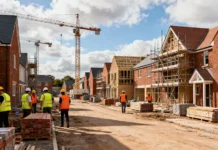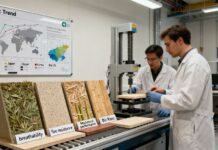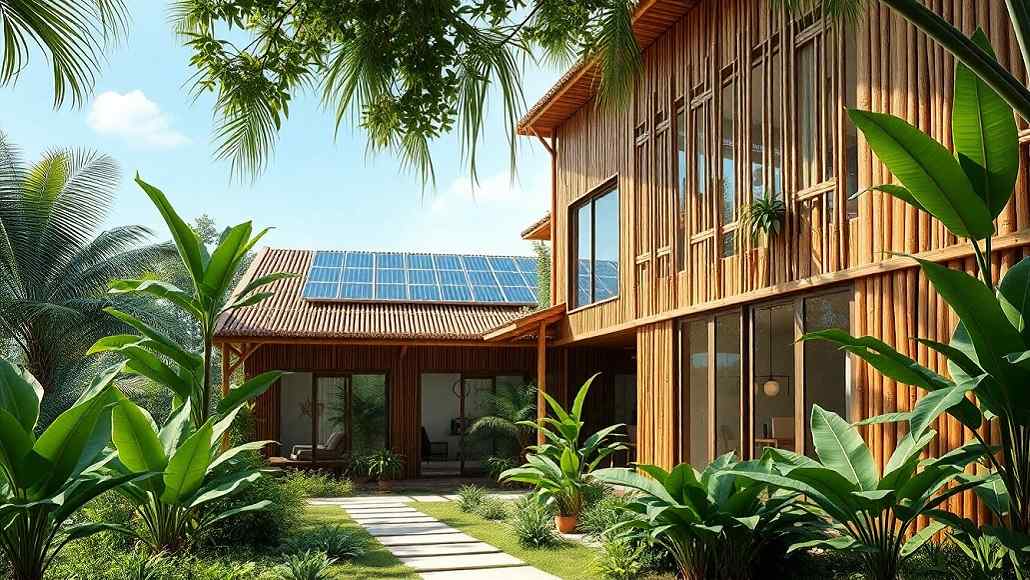Sustainable Building Practices in Asia: Embracing Eco-Friendly Materials
With the increasing need for environmental conservation, the building industry is being revolutionized, especially in Asia. India and Indonesia are leading the pack in adopting sustainable building practices, which they are achieving mainly by adopting eco-friendly materials. Asia’s transition to sustainable building practices: using eco-friendly materials shows a dedication to lessening the impact on the environment while fostering social responsibility and economic success.┬Ā In order to meet local requirements and adhere to international environmental goals, this article examines how these nations are implementing sustainable resources including bamboo, recycled glass, and recovered wood.
The Importance of Sustainable Building Practices
The building construction industry is among the biggest emitters of greenhouse gases in the world, providing about 39% of the energy-related CO2 emissions as indicated by the Global Alliance for Buildings and Construction. As the population continues to grow in urban areas, the need for building materials increases, causing unsustainable extraction processes and more waste. In response to this problem, most Asian nations are adopting green building practices to reduce the impact on the environment.
The use of environmentally friendly materials in construction not only lowers the carbon footprint but also improves the quality of living spaces. Eco-friendly buildings are more energy efficient, have better indoor air quality, and provide healthier environments for their people.┬Ā With Asia’s rapid urbanisation, integrating these practices is critical to ensuring environmental sustainability and increasing community resilience.
India: A Leader in Sustainable Materials
India is leading the charge in incorporating sustainable construction practices in Asia: embracing green materials. Bamboo is becoming increasingly popular as a substitute for conventional materials. With its fast growth rate and high strength-to-weight ratio, bamboo is one of the most sustainable materials around. In addition, the Indian government has recognised bamboo’s potential and created programs to promote its production and use in construction.
Bamboo bungalows built in Nagaland state demonstrate the material’s adaptability and strength. The “Bamboo House India” project, for example, illustrates the potential of using bamboo to build strong, disaster-resistant structures that are both beautiful and environmentally sound. A National Bamboo Mission report states that expanding the use of bamboo could revitalize rural economies and generate more than 1 million jobs in India.
Besides using bamboo, India is also testing the use of recycled glass for construction. Glass is being reused in a number of applications, including flooring, walls, and insulation, minimizing the demand for virgin material. Recycling glass bricks has been proven to increase energy efficiency as well as insulation, making buildings more environmentally friendly. According to a study that appeared in the Journal of Cleaner Production, the use of recycled materials for construction decreases overall energy use by as much as 30%.
Indonesia: Blending Tradition with Sustainability
Indonesia is another nation at the forefront of green building techniques. The government of Indonesia has adopted the use of green materials, specifically reclaimed wood, that is aligned with sustainability goals and cultural preservation. The utilization of reclaimed wood from demolished buildings not only saves energy but also retains the distinctive aesthetic beauty of traditional Indonesian architecture.
Initiatives like the “Green Building” project in Bali illustrate Indonesia’s dedication to sustainability. Such projects make use of locally found materials, such as bamboo and recycled wood, to design eco-friendly homes that blend well with nature. Green buildings, the Indonesian Green Building Council says, can cut energy use by 20ŌĆō50%, which shows the real gains of sustainable building.
Additionally, Indonesia’s dense tropical environment supports the cultivation of sustainable materials. The nation is emphasizing the creation of biophilic design principles that integrate natural resources into building design. This method enhances the health and well-being of people while reducing environmental pressure. Research has indicated that the incorporation of natural materials can radically enhance occupant satisfaction and lower levels of stress.
Challenges and Solutions in Adopting Sustainable Practices
In spite of the developments towards sustainable building in Asia: adopting green materials, there are still various challenges that it faces. One main setback is the upfront cost of using sustainable building materials, which can be greater than those of conventional materials. According to many, though, the long-term benefits of energy efficiency as well as lower maintenance costs are worth more than the initial expense.
Furthermore, more awareness and education on sustainable building are needed among builders, architects, and the public at large. More stakeholder involvement and training programs can improve the knowledge of the advantages of environmentally friendly materials and processes. Governments and organizations are now trying to bridge this shortfall with workshops and certification courses to encourage sustainability in the building sector.
Another hurdle is regulatory obstacles that could prevent the utilization of new materials. Incentivizing the use of green materials through tax reduction or subsidy for green building development can incentivize developers to go green.
The Future of Sustainable Building Practices in Asia
The future of sustainable construction in Asia: the adoption of eco-friendly materials is promising with increased awareness and the development of technologies. The combination of smart technologies with green materials is a new trend that can further increase energy efficiency in buildings. Smart home automation systems that control energy usage and track environmental conditions can go a long way in increasing the carbon-reduction capabilities of residential and commercial buildings.
As urbanization continues to define the face of cities in Asia, the call for sustainable construction solutions will grow louder. The ongoing partnership between governments, industries, and communities will be crucial in ensuring that the shift toward green construction is driven. By embracing local resources and new materials, countries in Asia can set the pace in developing sustainable cities that will serve the needs of generations to come.
Conclusion
To sum up, sustainable construction practices in Asia: adopting green materials are a critical movement towards realizing environmental sustainability and mitigating the issues presented by urbanization. India and Indonesia are among the nations that are making groundbreaking initiatives to incorporate sustainable materials, including bamboo, recycled glass, and reclaimed wood, in contemporary construction.
As such practices develop, not only do they add to the quality of living spaces but also to the economic and social prosperity of communitiesBy using green building concepts, Asia can show that economic growth and protecting the environment can go hand in hand. This will help create a more sustainable future. ┬Ā With a steady focus and new ideas, the continent is ready to become a world leader in green building.





























